Tiny snail found in wild for first time in 40 years
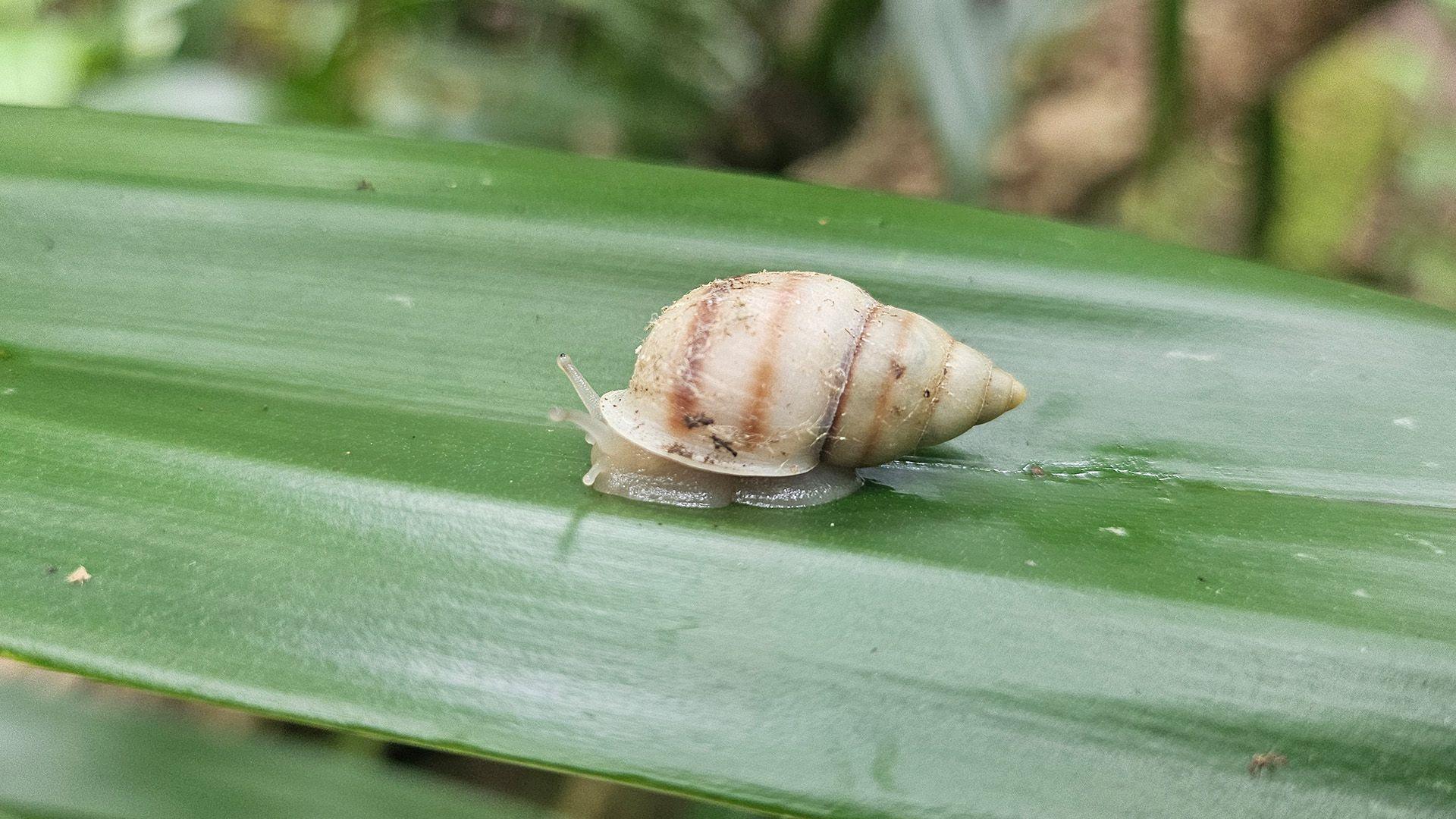
- Published
This snail might be small but conservation efforts to save it have had a massive impact.
The Partula tohiveana is a species of mollusc that became extinct in the wild but thanks to the hard work of conservationists from around the world, there's hope for the little critter.
For the first time in 40 years, conservationists have found one of these snails that has been born in the wild.
It means the snails have successfully established themselves in their French Polynesian home.
More stories like this
'Extinct' snails released back into the wild
- Published28 April 2023
Guide: What are endangered species?
- Published9 June 2022
Bringing back extinct animals may be impossible, say scientists
- Published11 March 2022
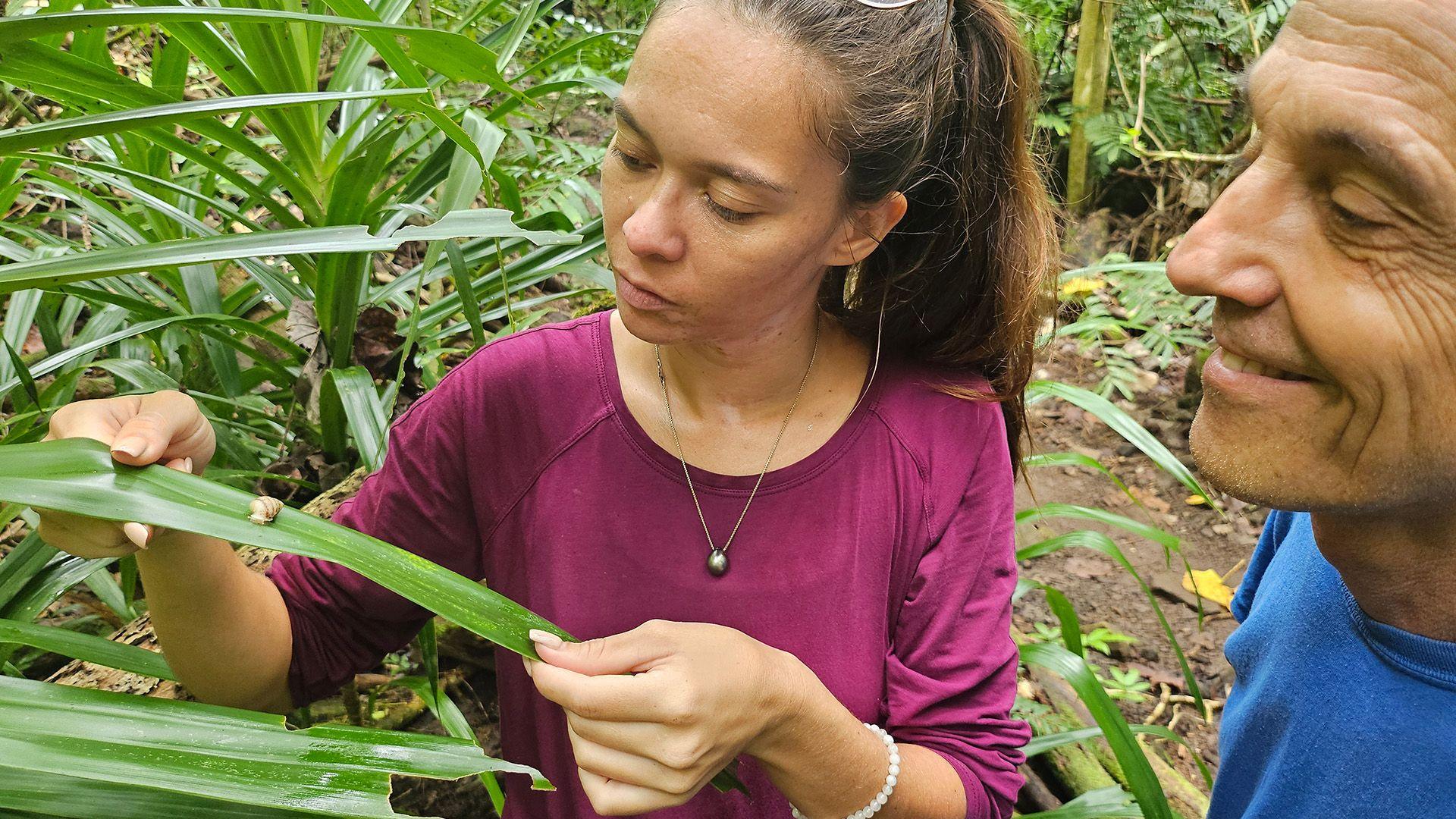
How was the snail species saved?
Back in the 1980s, people wanted to control the number of African land snails found in French Polynesia so a species of snail called the rosy wolf snail was introduced to try and reduce their numbers.
However, the move backfired as this invasive species targeted the partula snails instead, leaving several of the species under critical threat.
So in the early 1990s, the last remaining individuals of a few different Partula species - most of which were classed as Extinct-in-the-Wild - were rescued by London and Edinburgh Zoos.
The rescued snails were reared and studied with a view to eventually reintroduce them to the area.
Partula snails - also known as Polynesian tree snails - eat decaying plant tissue and fungi, so play an important role in maintaining forest health.
Returning these rare snails back to the wild helps to restore the ecological balance in these islands.
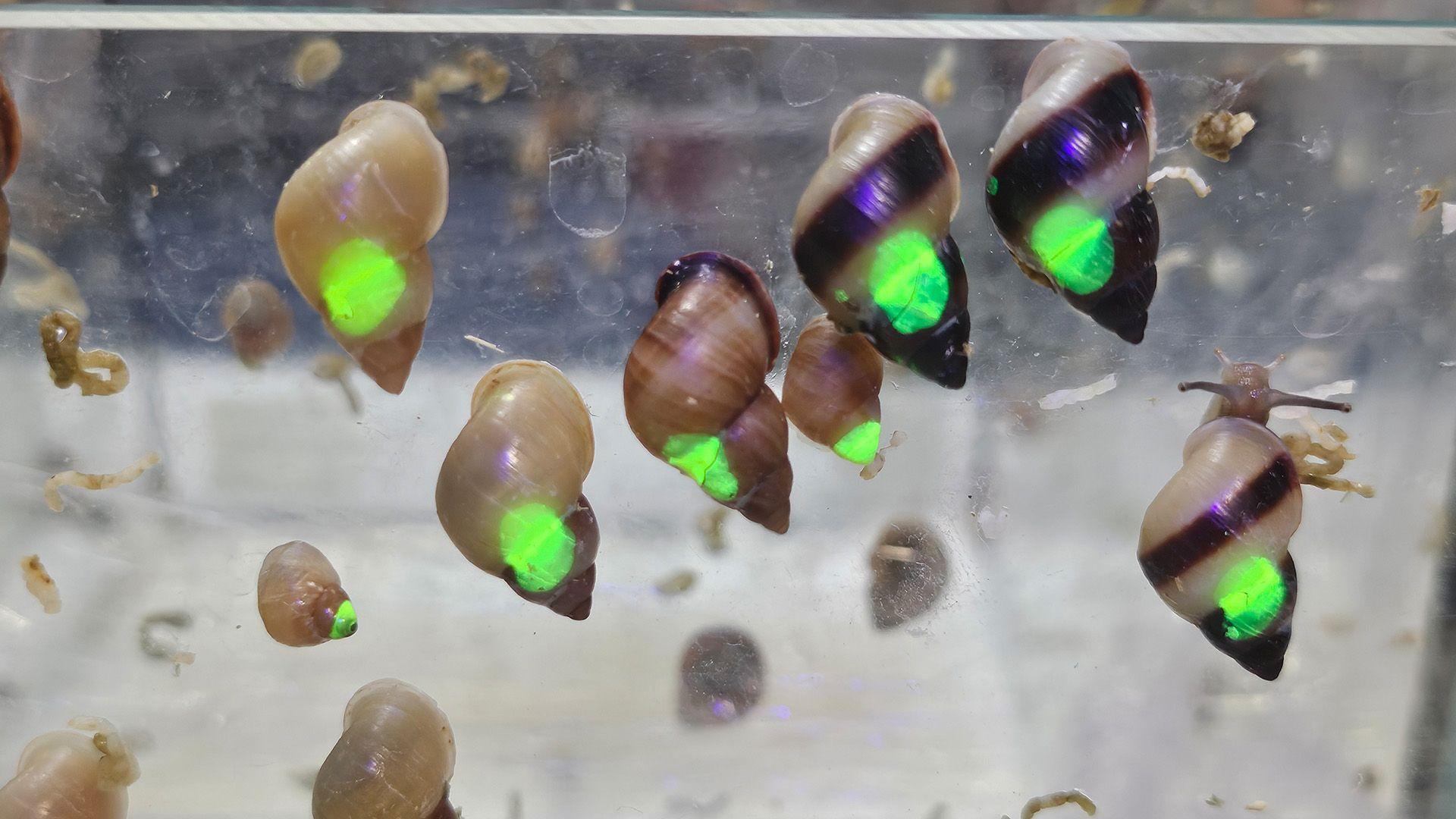
The snails that were reintroduced to the area were marked with a dot of UV on their shells which glows this bright green colour under UV light
This year zoos around the world restored over 6,000 snails to the French Polynesian island of Moorea, and now there's proof that these snails have successfully bred there.
It means that Partula tohiveana can now be considered as established and conservationists will eventually be able to downlist the snail species from Extinct-in-the-Wild to Critically Endangered on the IUCN's Red List.
Conservationists are able to spot and monitor the snails at night because they were all marked with a dot of UV reflective paint.
It meant they could identify if the snail had been introduced into the area or whether it had been born in the wild.
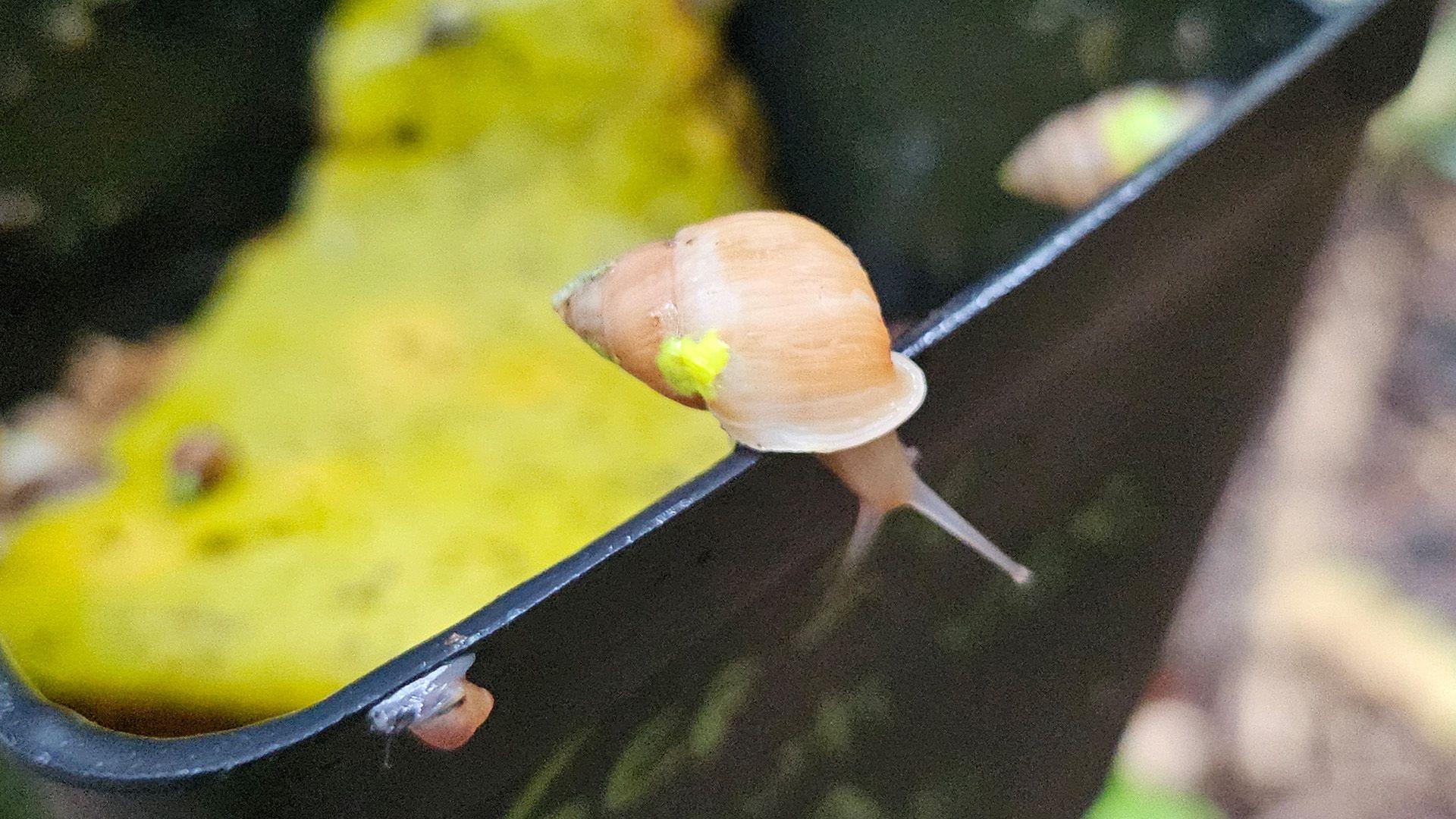
These little guys only measure 1-2cm but are very important for the ecological health of the area
London Zoo’s Senior Curator of Invertebrates, Paul Pearce-Kelly, who leads the Partula conservation programme, said:
“Though little these snails have great cultural, scientific and conservation value. Partula snails have always been part of Polynesia’s rich cultural heritage and play an important role in the ecological health of their forest habitats.
“This collaborative conservation effort is playing a crucial role in saving these species from extinction. It’s a powerful example of how conservation zoos can combat biodiversity loss. At a time when nature faces unprecedented challenges, these small snails are a symbol of hope for global wildlife.”
More stories like this
- Published20 August 2024
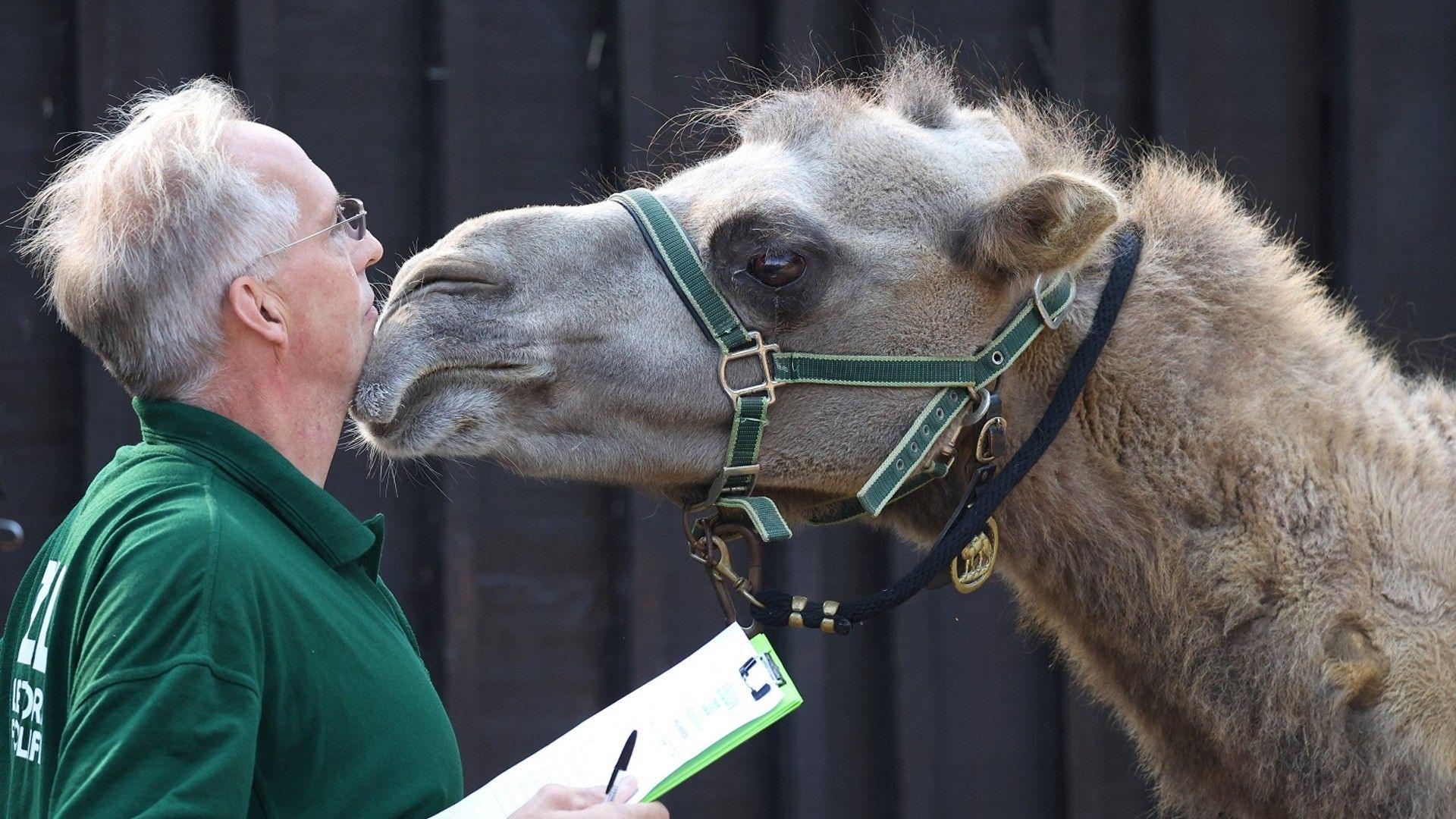
- Published12 March 2024

- Published21 November 2019

